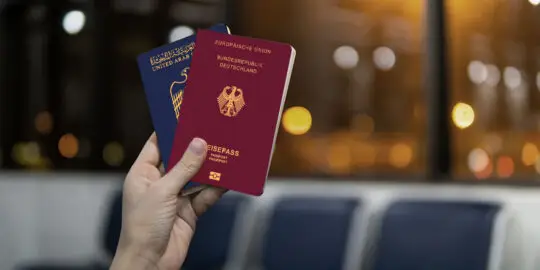Why is the EU creating the new asylum law?
The declared aim of the reform is to reduce the number of arrivals of people seeking protection in the EU, to carry out more asylum procedures at the so-called external borders of the EU and to restrict the mobility of people seeking protection within the EU.
At the same time, the system should be able to respond better to crises such as wars, pandemics or controlled migration.
Asylum in the EU: What are the key points of the reform?
The reform comprises a total of ten laws that revise and supplement the existing system.
But what will change for asylum seekers? Here are the most important points:
Fast asylum procedures at the EU's external borders
The new law is intended to strengthen the EU's external borders: people seeking protection are to be systematically registered and checked there - including biometric, health and security-related data. This mandatory screening should take a maximum of seven days.
This is followed byan additional, mandatory border procedure. This is an accelerated asylum procedure that is to be completed within twelve weeks. It applies above all to applicants from countries with an EU-wide protection rate of less than 20 percent and to people who are classified as a security risk or who are accused of deception.
However, human rights organizations criticize this new regulation. As the asylum procedure takes place at the border, the authorities assume that the asylum seeker has not yet formally entered the EU.
The proceedings take place in special asylum centers. This makes access to legal advice and lawyers more difficult. Asylum seekers therefore only have limited access to judicial review or appeal against decisions made by the authorities.
If an asylum application is rejected, the applicants are then to be returned to their country of origin or a safe third country as part of a return procedure, which also takes place at the external border.
Relaxation of the classification of safe third countries
Asylum applications can be rejected if those seeking protection were previously in a so-called "safe third country". The requirements for such countries will be lowered with the reform.
In future, it will be sufficient if a country complies with basic legal standards, even if the Geneva Refugee Convention is not fully applied. In addition, it will also be sufficient in future if only parts of a country have been classified as safe.
Until now, EU law has required a clear link between the asylum seeker and the third country to which they are to be returned - for example through residence or family ties. However, there are currently discussions at EU level to abolish this regulation.
In future, an EU member state could also deportasylum seekers to countries that they have only passed through while fleeing or with which agreements exist - regardless of whether the person has ever set foot there or can prove a personal connection.
However, the EU Parliament and the member states still have to approve the proposal.
More safe countries of origin and returns
The EU Commission has proposed classifying seven countries - Kosovo, Bangladesh, Colombia, Egypt, India, Morocco and Tunisia - as "safe countries of origin". People from countries classified as safe countries are generally not entitled to protection in the EU. Their asylum applications can be examined and rejected more quickly.
Another important part of the reform is the increased return of rejected asylum seekers. The Commission is planning to introduce the mutual recognition of deportations throughout the EU so that a deportation decision from one member state is also valid in other states. This is intended to prevent people from avoiding deportation by moving within the EU.
Furthermore, detention pending deportation and entry bans are to be imposed and extended more easily and uniformly throughout the EU, particularly in the case of persons who are classified as a security risk.
Changes to the Dublin Regulation
The previous Dublin Regulation will be extended by a new directive. The principle that the member state of first entry is responsible for the asylum procedure of the person seeking protection remains in place. However, this regulation is to be implemented even more clearly in future.
In order to relieve the burden on countries at the EU's external borders, all member states - dependingon their population size and economic strength - are toparticipate in the reception of recognized refugees or make financial or material contributions. Initially, a redistribution of 30,000 people is planned.
Use of new tools to verify identity
In order to verify the identity of an asylum seeker, authorities will be able to access personal data more easily in future. This includes the confiscation of identity documents and the reading of smartphones.
This is criticized by human rights organizations as an invasion of privacy and a possible violation of fundamental rights.
Deportation centers outside the EU
For the first time, the EU Commission is to create a legal basis for member states to place rejected asylum seekers in deportation centers outside the EU if a return decision is final.
Until now, asylum seekers have only been returned either to their countries of origin or to third countries. However, these third countries often refuse to accept asylum seekers. With the so-called deportation centers, the EU wants to create another option.
It is currently unclear whether the stay in the deportation center will be short or long term. However, the EU states are called upon to create better repatriation agreements with third countries.
Conclusion: When will the new law come into force?
The reform of the Common European Asylum System (CEAS) was adopted in 2024 and came into force on June 11 of the same year. The EU member states are currently in a transitional phase when it comes to implementing the new directives. They must implement the directives and regulations contained in the reform by summer 2026.
Some directives - such as the return of asylum seekers to third countries with which they have little connection - must first be confirmed by the EU Parliament and the member states.











